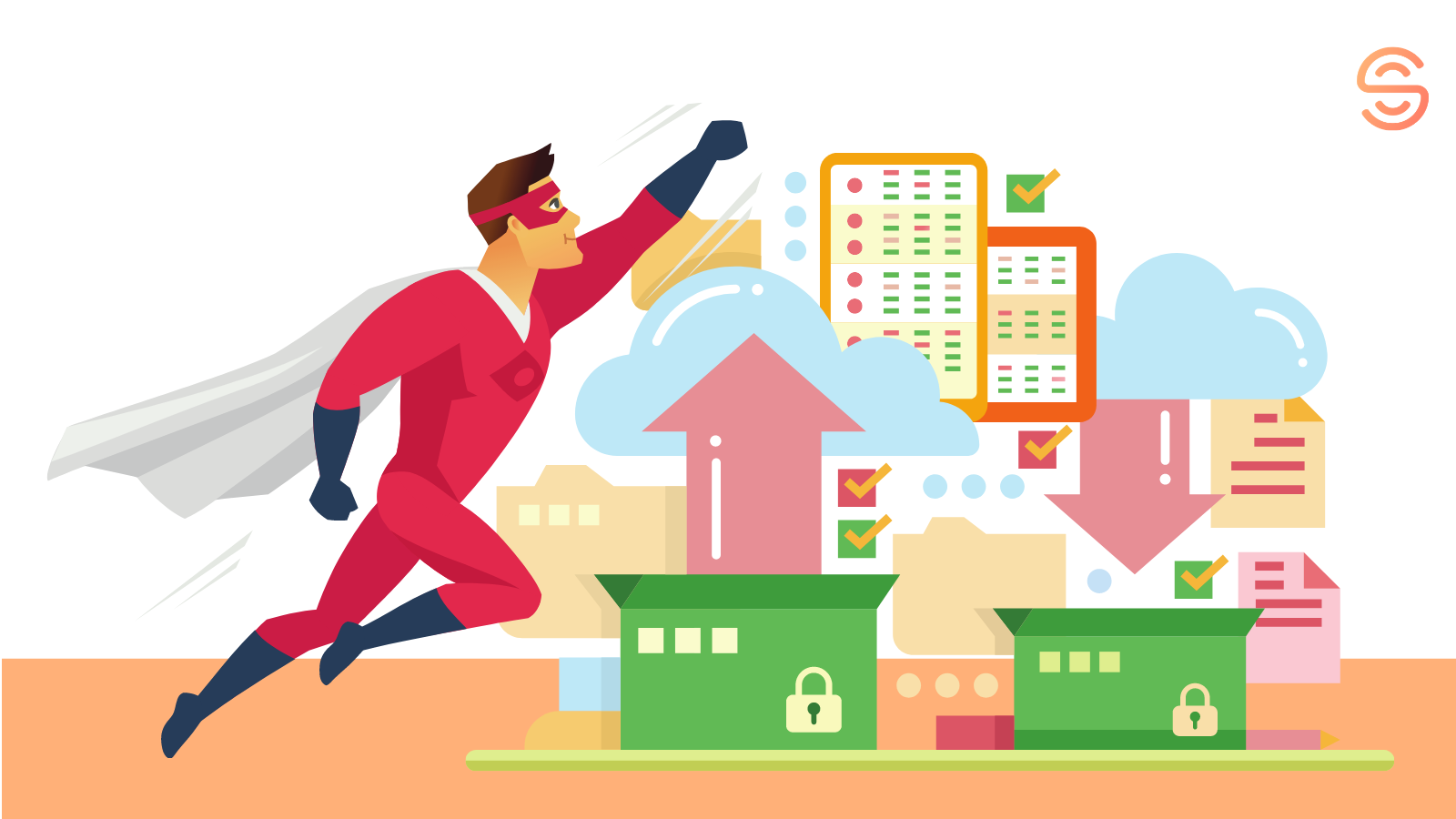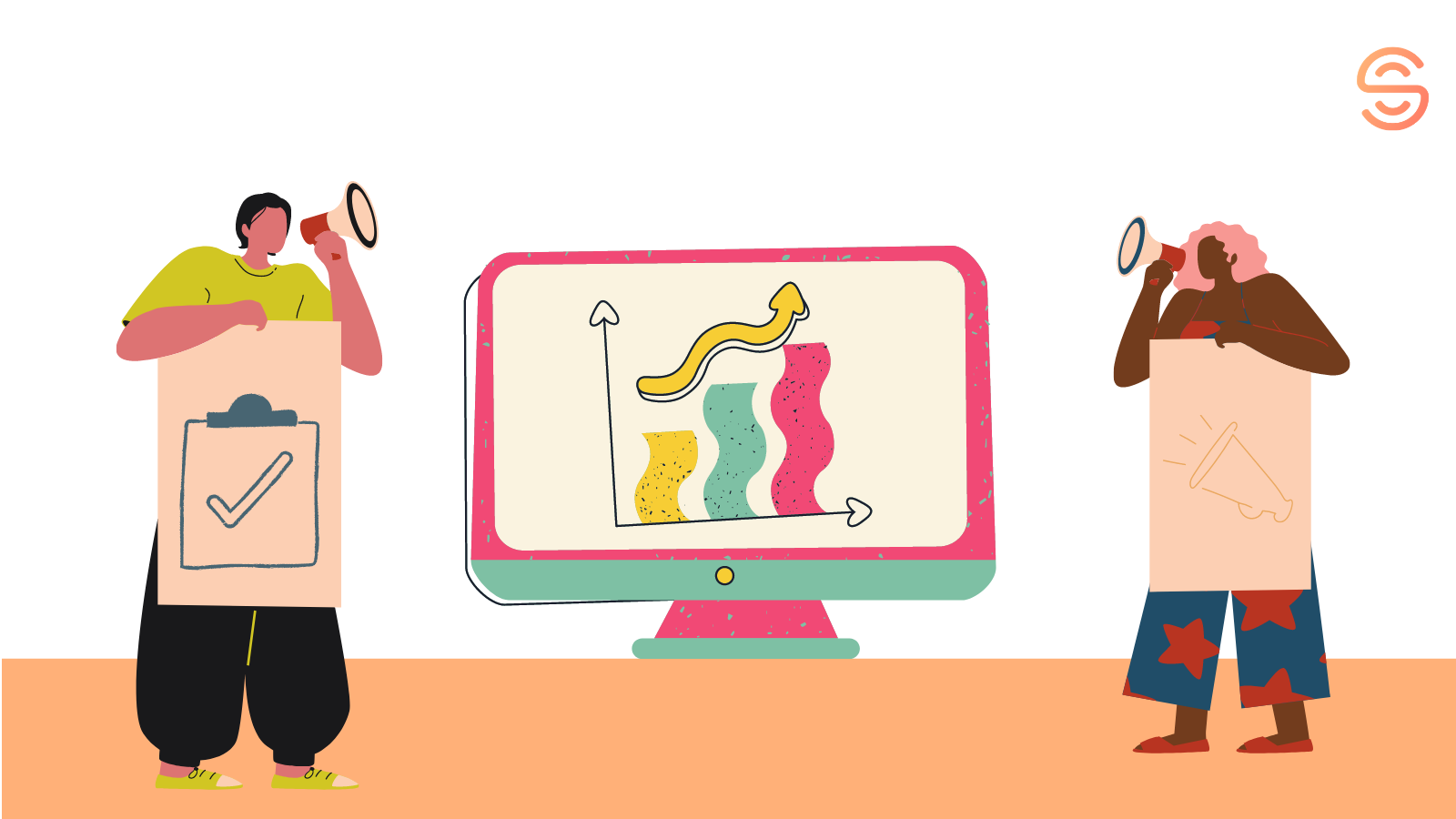- Why Do Personalized Messages Work for B2B?
- How Do I Personalize at Scale? God Bless Automation!
- Data-Driven Personalization: A 5-Step Walk-Through Guide
- Step 1: Create an Ideal Customer Profile
- Step 2: Build prospect lists and keep them up to date
- Step 3: Track sales triggers
- Step 4: Create personalized messages
- Step 5. Make sure your messages are appealing
- Personalization: The Main “Don’t”
- Where to Draw the Line?
- Wrapping It Up
Data-Driven Personalization for B2B Sales Pros
March 15, 2021 11 min. read

Contents:
Try AI-Driven Insights
Monitoring for Free
Discover new business ideas and growth opportunities using
our AI-powered insights monitoring tool
If you open your email right now, our bet is that it will be cluttered with mass emails that were sent to you together with thousands of other customers. You probably don’t even bother to open these emails, even if they do make it past the spam filter.
But you also won’t have to dig very deep to find a couple of messages that greet you by name, mention a history of your previous purchases, and offer some products and discounts tailored just for you. There is a good chance that you will open an email like this and read it, because it was addressed directly to you and contains an offer that resonates with you.
You’ll be pleased the company cares about you, won’t you? Either way we all like personal attention.
Here is what we call personalization. Briefly, you tailor your offer to your leads’ needs and make it go straight to their hearts. It’s a great way of engaging potential clients. And this is exactly what you need, right? To attract leads with your offer and move them down your sales funnel.
How do you do that? The answer is: DATA. Based on information you’ve collected about your leads, you can figure out what they need and craft your offer the right way. This information can be gathered from open sources, like social media or forums, via websites analytics, or your previous deals with these leads (if any) stored in CRM.
Actually, most actions taken by a customer online can be tracked, particularly those driven by problems that they might be struggling with. We call these actions “sales triggers”. And these are what help you personalize your offer.
In B2B sales, data-driven personalization is used more and more often these days. No surprise: let’s look at the benefits for B2B markets.
Why Do Personalized Messages Work for B2B?
In order to employ personalization methods for a B2B business, you need to take two key factors into account — corporate and individual level strategic considerations. You are selling to a company, but your offer should still resonate with individual decision makers within that company. This cuts to the core of why personalization works for B2B.
Yes, transactions occur at a corporate level, but never without the all-important involvement of a person, their team of colleagues, or other employees responsible for representing the best interests of a company.
In a data-driven world, individual consumers and the companies they work for have likely become somewhat immune to mass-market announcements. They may not care if your company is offering a discount on certain products, because the chances are that they’re not even looking for your product or service, regardless of whether it’s on sale or not. Nor are they likely to care about top-selling products, for precisely the same reason.
To cut a long story short, if any or all of your audience isn’t even in the market for what you’re offering, they are understandably blind to any sales efforts not directly related to them. As the old saying goes, “you can’t sell ice to Eskimos”.
More often than not customers are seeking solutions to problems and challenges that they are already well aware of, or actively seeking out specific opportunities which they need help exploring.
That’s why personalization has real value — it directly targets, assumes and anticipates the specific demands or questions that potential clients might have. B2B sales pros reap the benefits by providing “personalized” solutions or guidance most likely to be of value to a particular customer.
How Do I Personalize at Scale? God Bless Automation!
Now, you have the idea of what personalization is and why it’s essential in B2B sales. You also know that data is the key component of a successful personalization.
However, you may be also wondering: “Wait a sec… You’re asking us to gather all this data manually? You must be kidding!”
Don’t worry, we are not. Gathering information about customers, tracking their actions, and sending personalized emails is an enormous amount of work that people can hardly process.
Here the automation comes in. By automating all these actions, you free employees from repetitive, time-consuming work, so that they can focus on more important tasks. Additionally, having a ready-to-use action plan will help you to react immediately and without hesitation.
With AI-powered tools, you can store and easily access information about your customers, keep an eye on sales triggers in real time, send personalized emails, and even create content. Let’s address each of these advantages in a little more detail and find out how to get the most out of data-driven personalization.
Data-Driven Personalization: A 5-Step Walk-Through Guide
Step 1: Create an Ideal Customer Profile
First, you have to know who you’ll be selling to and what pain points and needs a particular customer has. That’s why you should think through an Ideal Customer Profile (ICP), or profiles if you want to target products or services to different segments. Create a B2B buyer persona and get an idea of who may be a decision maker.
Step 2: Build prospect lists and keep them up to date
Collect leads fitting your ICP and research decision makers. Remember that you need to have all the information about your leads stored in one place, filtered, segmented, and up to date so that you can clearly understand who is who and how to interact with them. Sales automation tools can help you do all of this.
Step 3: Track sales triggers
It’s time to monitor and analyze information about your leads to have a reason to reach out and info to personalize your message with. Collect info from open online resources, both familiar and industry specific — your leads’ digital footprints are clear and defined. They include posts liked, new achievements and funding rounds closed, new vacancies posted, etc.
Again, automation tools like Signum.AI may help you. You will be able to access this data in real time and use it to your advantage: react quickly to leads’ behavior that indicates their willingness to buy from you.
Step 4: Create personalized messages
Now, use the data collected to make your email or message personalized and relevant. Using your recipient’s name is standard practice, but it doesn’t have to stop there. Use sales triggers that you discovered: congratulate on the new achievement, mentioned lead’s interests that you found out, etc.
While personalizing the message, don’t forget about yourself. Present yourself as an individual rather than a company. Be friendly and include personal information such as a photo or a link to your LinkedIn profile, which should help them to accept and understand that your B2B efforts come from a real, human perspective.
Remember the first step on ICP: carefully segment your customer list with the goal of configuring a message that addresses as many individual variables as possible. Communicating your problem-solving offer will flow naturally when it is based on real information, carefully collected and organized for just such a purpose.
Thanks to many high-quality tools now on the market, thoughtful, honest automation of key digital tools such as emails and LinkedIn messages is within reach.
Step 5. Make sure your messages are appealing
Content is king, but it shouldn’t be an afterthought. It’s important to have tailored messages for any type of a trigger event. Imagine how much time effort can be saved with GPT-3-powered software created especially for sales and marketing pros that will be able to create catchy subject lines, CTAs, and texts for direct messages? You might be surprised, but such technology does exist.
Personalization: The Main “Don’t”
Perhaps most importantly, be aware that personalization can backfire if it is perceived to be too close to a customer. Although a client often feels excited to receive a thoughtful, personalized message — “Whoa, bullseye!”, their second thought might be — “Hey! They’re tracking me and manipulating me!”
It’s important to respect your leads’ boundaries and carefully consider the balance between valued attention and communication that’s too close for comfort. Don’t make your messages TOO personalized.
Remember, that you use buyer intent data to stay relevant and have a reason to reach out, not to make anyone call the police.
Where to Draw the Line?
Think wisely about the sales triggers you use. Use data ethically and respectfully. Your offers must be based on a transaction history or data set that has been collected from an open, publicly available source. Test your message on 10-12 customers first. If it worked well for them, you can then use it for the rest of your customer list.
Wrapping It Up
Done right, data-driven personalization can be of powerful benefit to you, especially in B2B. And technology makes it easier to automate this process.
In any case, as AI becomes an everyday part of our digital experience, in life and in business, your B2B sales approach can’t afford to ignore it. At the very least, you should inform yourself of the implications for your business, good and bad.
More useful content on our social media:
